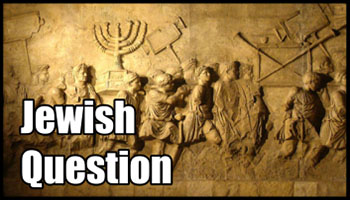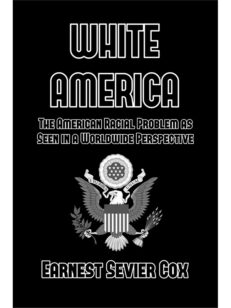Description
By E. S. Cox. A masterful survey of the relationship between racial homogeneity and the preservation of civilization, described against a sweeping historical backdrop which includes Egypt, India, South America, South Africa, and finally the U.S.A.
The author proves how racial mixing has in every case led to the collapse of the original founding civilization, and that the only solution to the problem is not segregation, but total physical geographical separation.
The only solution for America, this work argues, is the repatriation of its nonwhite population to their continents of origin.
Written in the 1930s, the highly accurate predictions of what would happen if a policy of separation was not followed, makes the book’s ultimate thesis even more urgent—particularly in light of increasing anti-white hatred and discrimination in America today.
“The American problem is not beyond the possibility of permanent solution, but such successful solution will probably depend upon the attitude of the present and the succeeding generation of whites. We know the long continued dwelling together of blacks and whites during the past sixty centuries has had but one ending: amalgamation.
“Imagine the mulattoes and the nearer whites of the United States to be greatly augmented in numbers. Eventually the nation would cease to reflect Caucasian ideals and cease to represent Caucasian culture . . . The halls of the national capitol, once familiar to the noblest of the Saxons, would echo to the tread of mulattoes, and a mixed-breed would sit as President.”
This new edition has been hand edited and completely reset. It contains the complete original text and nine new illustrations and a complete index.
Contents:
Note from the Publisher (1937 edition)
Preface
General Introduction
Chapter 1: Race Migrations—Prehistoric
Chapter 2: Race Migrations—Historic
Chapter 3: Hybrids and ‘Remnants’
Chapter 4: Civilizations That Have Perished Through Contact with Colored Races—Egypt
Chapter 5: Civilizations That Have Perished Through Contact with Colored Races—Egypt Continued
Chapter 6: Civilizations That Have Perished Through Contact with Colored Races—India
Chapter 7: Civilizations That Have Perished Through Contact with Colored Races—China, Mexico, Peru
Chapter 8: Civilizations That Are Imperiled Through Contact with Colored Races—Latin America
Chapter 9: Civilizations That Are Imperiled Through Contact with Colored Races—South Africa
Chapter 10: The Civilization That Has Survived Contact with Colored Races—The United States
Chapter 11: Problems of Civilization in Contact with Colored Races—Economic Problems
Chapter 12: Problems of Civilization in Contact with Colored Races—Religious and Social Problems
Chapter 13: Solution of the Problems of Civilization When in Contact with
Colored Races—Separation or Amalgamation; Repatriation A Necessity
Chapter 14: The Ideal Negro State
Chapter 15: Program of Repatriation
Index
About the author: Earnest Sevier Cox (1880–1966) was a Methodist minister, best known for his involvement in the promotion of the state of Virginia’s anti-miscegenation laws of the early twentieth century. A personal friend of like-minded black separatist Marcus Garvey, Cox took an active part in promoting their joint ideal of repatriation and racial separation. His other works include Teutonic Unity, Let My People Go!, and Lincoln’s Negro Policy.
“He has dealt with the problem in a singularly moderate and dispassionate manner . . . The time has come when we must look the facts in the face and discard our sentimental point of view in favor of drastic measures; and, unless some remedy is found, the nation is doomed to mongrelism.” —MADISON GRANT.
“The book is one we shall have to take account of.” —EDWARD A. ROSS.
“Congratulations on your book and your efforts for our country and our race.” —LOTHROP STODDARD.
“It is a stirring volume . . . America is still worth saving for the white race, and it can be done.” —EUGENICAL NEWS.
“It is safe to say that WHITE AMERICA will be a classic on the race question, quoted for generations to come.” —H. J. ECKENRODE.
256 pages. Paperback.


























